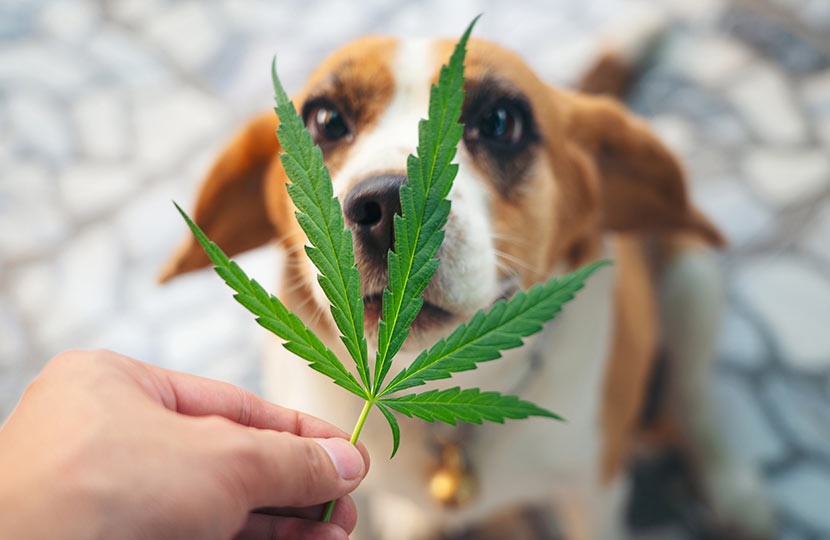Sometimes, nothing beats relaxing at your pad, grabbing a preroll, and lighting up in the comfort of your own space. You can truly do your own thing without having to worry about anyone around you. But then again, many cannabis consumers own pets, so if you have a little furry friend living with you, you’re not really smoking alone, are you?
We’ve all heard about how secondhand smoke can cause a bit of a stimulating effect for non-smokers. Does the same thing happen to pets? And if so, could it be harmful?
While the CBD from cannabis could offer benefits for your animal companions, there isn’t enough data to know for sure. Because their metabolisms are different from ours, they react differently to cannabinoids than we do, so it’s vital to understand what passive smoke could do to your pets before you light that preroll.
Clearing the Air
So let’s get right to the point — secondhand cannabis smoke does give pets an energizing head buzz, and while some of us humans love it, our animal pals definitely don’t. But more than unpleasant, these effects are not good for pets. So if you are lighting up with furry family members in your house, it’s time to change that habit.
Cannabis smoke can trigger a strong response in pets, and you’ll probably notice by a shift in their behavior. We have fewer cannabinoid receptors than animals, which is why they are extra-sensitive to THC. This is especially true for cats and dogs — the most common household pets.
Just like their human counterparts, tolerance levels will vary between individual pets. Several factors, including size, age, and health, all contribute to how an animal will react to cannabinoids. Naturally, the smaller and older the pet, the more they will feel the effects of cannabis.
But it’s not just the psychotropic effects you should worry about; the smoke itself can affect their breathing, potentially leading to conditions like asthma or bronchitis. It can also irritate their eyes and gastrointestinal tract. So if you have a pet, simply smoke in a separate room and they’ll be fine, right?
Well, no, that may not work either, unfortunately.
Believe it or not, there’s actually thirdhand smoke, and while it may not do much to us, it’s problematic for animals. Basically, this is the smoke that’s absorbed into furniture, carpet, clothing, and so on. Animals with shorter snouts, like cats, are especially susceptible.
If your pet is exposed to secondhand or thirdhand smoke and is having a reaction, you should bring them to the vet immediately. Even a fairly small dose can be toxic, and different intake methods require different forms of treatment.
An average preroll will have roughly 150 mg of THC, which is nowhere near the amount that could cause death. There are very few animal fatalities from cannabis consumption, though it does happen — mostly with products containing medical-grade levels of THC. So patients who keep medical cannabis in their homes should be extra cautious.
Eating Cannabis Is Bad for Pets Too
Consuming THC orally can be just as dangerous for pets, potentially leading to excessive drooling, frequent urination, lots of vocalization, vomiting, coordination problems, slow heart rate, slow breathing, dilated pupils, disorientation, and hyper behavior. They may even experience tremors, seizures, or fall into a coma. The good news is that in most cases, the effects will take at most 72 hours to wear off. During that time, it’s important to be with your pet and help them through the ride, as they won’t be aware of why they’re feeling strange, making it all the more stressful for them.
If your pet winds up eating edibles or part of your stash, don’t hesitate to take them to the vet and explain what happened. Transparency is key, as traditional urine testing for THC in animals takes too long. It’s up to the owner to be as specific and detailed as possible when consulting with a vet.
How to Consume Safely With Pets
If you do share a home with an animal, we recommend smoking on the porch or in the backyard if you have one and/or the other. Of course, this all depends on what’s legal and how secluded the space is.
If you do need to smoke inside, the best thing you can do is reserve a room for smoking that has strong air circulation and keep your pets out at all times. You can also try vaping, which puts out fewer toxic chemicals and dissipates faster than smoke. Because of this, your furniture, carpet, rugs, and walls won’t absorb vapor in the same way as traditional cannabis smoke.
You can use a steam cleaner on carpets, rugs, and upholstered furniture to remove thirdhand smoke from the equation. Bathing your pets regularly can help as well. And above all, make sure you always keep your cannabis products hidden somewhere where your four-legged friends cannot find them.
Keep in mind that the main culprit is THC. CBD, on the other hand, is believed to be harmless for pets, and may even be beneficial — though a vet’s recommendation is always advised. Regardless, because of how smoke affects their breathing, even if your preroll contains a CBD-dominant strain, it’s still not a good idea to light up in the presence of animals.
Resources:
https://www.leafly.com/news/lifestyle/secondhand-cannabis-smoke-pets
https://vcahospitals.com/know-your-pet/marijuana-intoxication-in-dogs-and-cats
https://www.royalqueenseeds.com/blog-is-secondhand-cannabis-smoke-bad-for-your-pets-n1163

